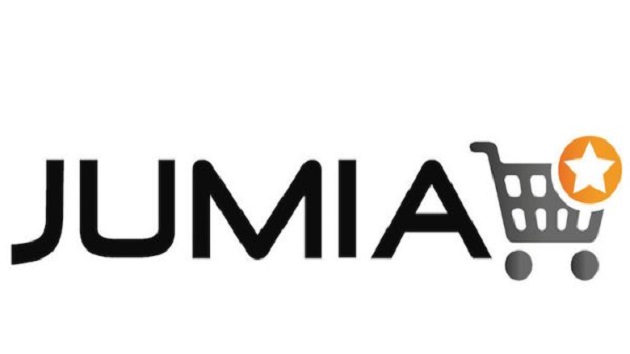E-Business
Five Stress-busting Hacks for the Busy Executive

We’re all seeing firsthand how businesses have been hard hit by the Covid-19 pandemic. Downsizing, budget cuts, long working hours and increased competition are just some of the issues that companies are now facing. Employees who are grateful to still have their jobs are working extra hard to navigate in between the intense demand — and this can be stressful.

The adoption of remote working models has also increased stress levels for some. Many of us are now participating in more meetings (often back-to-back) and engaging with emails more than ever before — well before and after working hours. Working remotely can be incredibly demanding on executives as it blurs the boundaries between work and home life.
Services like SweepSouth Connect, an innovative on-demand platform, afford busy executives the flexibility of booking a pre-vetted household or outdoor service professional at any time. This offers convenience as routine household tasks can be delegated with a sense of trust. This way, time is saved and stress is reduced as items are checked off the to-do list.
Besides getting an extra set of hands, there are other things that busy executives can do to ease the side effects of stress. Here are five of them.
Exercise regularly: Exercise helps reduce stress hormones and makes the body stronger physically. It also helps build immunity against diseases and improves the quality of sleep. For most busy executives, the goal will be to plan to exercise regularly at least three times a week. Vigorous workouts, jogging or just a stroll can help as muscular relaxations that help deal with anxiety and depression.
Take breaks: Taking breaks can actually boost your performance at work. Getting up from your desk and walking around to clear your head, going outside for a few minutes to get some fresh air, and observing micro-breaks while working have a positive effect on your level of productivity. It might not be a long holiday but it can help decrease exhaustion momentarily.
Eat healthy: Many are stress-eating and gaining weight during the pandemic. An unpredictable lifestyle is synonymous with a busy executive and this in turn affects eating habits. Ensure that meals are balanced, do not eat too late in the evening, watch your portion size, and make sure that you become a fan of fruits and vegetables. Try not to skip breakfast, avoid or limit caffeine, and make sure that alcohol intake is moderated.
Get better organised: It is always great to plan your day the night before. Also, having a mental note of what to do might not be enough to navigate through the day. For a busy executive, a to-do list helps in prioritising urgent and important tasks — this can be done with old-fashioned pen and paper or through an app. Plan for what you can only allocate your time to rather than overbooking yourself. Being proactive by anticipating possible inadequacies on the job also helps in reducing stress levels.
Get enough sleep: Work stress can make it difficult to sleep and even cause insomnia. A regular sleeping routine helps reduce stress. Sleep deprivation can cause tiredness, lack of creativity and can be detrimental to work performance. Consider sticking to an early bedtime and reading a book or meditating before sleeping. Making the room more conducive for sleeping and eating long before bedtime are solutions for achieving a good sleep that reduces stress levels.
The result of stress on the lives of executives can lead to an array of health problems, low energy, demotivation and a lack of inspiration. Busy executives will need to get better at managing their time and lives in order to plan to complete more in a shorter amount of time even as they reduce stress.
E-Business
Firm Identifies Global Scam Activity Linked to the Release of Avatar 3

The premiere of Avatar 3 has taken place in several countries and has been accompanied by a noticeable increase in online interest. Amid the heightened attention surrounding the release, Kaspersky experts identified an increase in cyber-scam campaigns that exploit the movie’s launch and users’ desire to watch it online. The fraudulent websites target users across multiple regions, indicating attempts by attackers to reach a global audience.

The scam operates as follows: cybercriminals create suspicious websites that offer online access to the Avatar 3 movie. Attackers place particular emphasis on localisation, publishing the sites in multiple languages to attract users from different countries. However, the translations are often poorly executed and contain grammatical errors and inconsistencies, which may serve as indicators of fraudulent activity.
When users attempt to start the video, they are presented with a fake media player and prompted to register in order to obtain “full” or “unlimited” access to the film. As part of the registration process, users are asked to provide personal information, including an email address and mobile phone number.
At later stages, scammers may request additional data, including payment details, under the guise of activating a “free trial.” This creates risks of credential compromise, particularly if users reuse passwords across multiple services, and may also lead to financial losses.
“Cybercriminals consistently exploit major movie premieres to capture users’ attention and increase the effectiveness of their schemes. We advise accessing films only through official platforms and exercising caution when encountering websites that request personal or payment information. It is also important to use reliable security solutions to protect all devices, including mobiles,” comments Olga Altukhova, Senior web content analyst at Kaspersky.
E-Business
Galaxy Backbone Celebrates the Federal Government’s Paperless Civil Service Milestone

Galaxy Backbone (GBB) aligns with and celebrates the successful announcement by the Office of the Head of the Civil Service of the Federation on the achievement of a Paperless Civil Service, a significant milestone in Nigeria’s public sector reform and digital transformation agenda.

The milestone was formally highlighted at a press briefing led by the Head of the Civil Service of the Federation, Mrs. Didi Esther Walson-Jack, who commended Galaxy Backbone for its sustained support and contribution throughout the implementation of the programme.
GBB has played a critical role in enabling this transition by providing secure, scalable, and shared digital infrastructure that supports the digitisation of government processes across Ministries, Departments and Agencies (MDAs). Through the 1Government Cloud, MDAs have been empowered to migrate from paper-based workflows to digital platforms, improving efficiency, collaboration, data security, and service delivery across the Federal Civil Service.
In addition, GovMail, GBB’s secure government email platform, has strengthened official communication, enhanced records management, and reinforced cybersecurity standards—key pillars in sustaining a paperless operating environment.
Galaxy Backbone acknowledges the collective efforts of the Office of the Head of the Civil Service of the Federation, Permanent Secretaries, Directors of ICT, consultants, partners, and dedicated public servants whose commitment and collaboration ensured the smooth delivery of this initiative.
The Managing Director/Chief Executive Officer of Galaxy Backbone, Prof. Ibrahim Adeyanju, was represented at the press briefing by Akintayo Bamisaye, Acting Group Head, Research, Digital Innovation and Skills Department (RDIS).
GBB describes the achievement as a strong close to 2025 and reaffirms its commitment to supporting the Federal Government in building a modern, efficient, and digitally enabled public service.
E-Business
Jumia CEO says Black Friday Signals Nigeria’s E-Commerce Maturity

At the close of 2025, Temidayo Ojo, the CEO of Jumia Nigeria, reflected on a year-end shopping season that points to the growing maturity of the country’s e-commerce market. “Black Friday is no longer a single, short-lived spike in activity,” he said.

“It has become a familiar, anticipated moment in the retail calendar, where consumers shop deliberately and with confidence.”
Preliminary KPIs for the two months ended November 30, 2025, show strong year-on-year growth in both orders and Gross Merchandise Value (GMV), with GMV growth outpacing order growth. This indicates that customers are placing fuller, more considered baskets rather than shopping in fragmented transactions. Nigeria ranked among Jumia Group’s better-performing markets, with engagement remaining steady throughout the Black Friday period rather than spiking briefly and tapering off.
A key factor behind this performance is the growing familiarity of consumers with online shopping. Customers are increasingly leveraging platform features such as saved carts, brand stores, and price comparison tools to plan purchases in advance. This trend suggests that digital commerce is becoming embedded in everyday habits rather than being viewed as a one-off event.
Ojo also highlighted the role of Jumia’s JForce network in connecting digital commerce to local communities. “Our agents are critical to ensuring that customers across Nigeria, including secondary cities and smaller communities, have access to variety, consistent pricing, and reliable delivery,” he said. “During peak periods like Black Friday, JForce agents can respond faster, serve more customers efficiently, and build stronger local relationships. This isn’t just a distribution channel—it’s a pathway to sustainable income and inclusion.”
Reflecting on the overall performance, the CEO concluded: “What we’re seeing this year-end is steady engagement across categories, stronger consumer confidence, and partners like our JForce agents benefiting from increased activity.
“It confirms that Nigeria’s e-commerce ecosystem is maturing, growing in a more structured and resilient way. As the December Holiday Sale continues, we expect these patterns of familiarity, trust, and participation to sustain momentum and drive both commerce and community impact across the country.”

 News1 day ago
News1 day agoCourt Sends Faleti, Ex-Lagos Director to Jail for Stealing ₦48.9m from Access Bank

 E-Financial1 day ago
E-Financial1 day agoRemita Powers over ₦100 Trillion in Payments as Nigeria’s Digital Economy Expands

 News2 days ago
News2 days ago974 Nigerians Face Imminent Deportation from Canada Amid Enforcement Surge

 General News2 days ago
General News2 days agoHouse of Reps Releases Certified Copies of Tax Reform Acts amid Gazette Discrepancy Claims

 E-Financial1 day ago
E-Financial1 day agoWhy 2026 Must Be the Year Nigeria’s Economy Works for All

 E-Financial1 day ago
E-Financial1 day agoFlutterwave Acquires Nigeria’s Mono in $25m-$40m All-Stock Deal

 E-Financial1 day ago
E-Financial1 day ago2026: SEC to Review Rules to Incentivise SME Listings

 General News1 day ago
General News1 day agoNigeria Targets Satellite-to-Mobile Services in Draft Spectrum Roadmap

























